#real madrid club de futbol
Text
v bad quality but look at them. look at my babies <333


#karim benzema#luka modric#vinicius jr#dani carvajal#real madrid#real madrid club de futbol#real madrid cf#ucl#ucl 22/23#champions league#liverpool#THEY DID..OKAY#first half was a bit meh#but second they were AMAZING#kinda#football
79 notes
·
View notes
Text

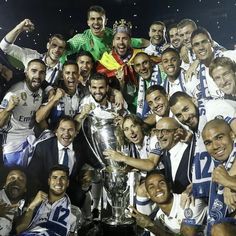

uefa champions league 2014 -- real madrid cf <3
#football#soccer#real madrid#real madrid cf#la liga#lisbon 2014#uefa champions league#real madrid club de futbol#cristiano#cristiano ronaldo#marcelo#luka modric#casemiro#sergio ramos#iker casillas#toni kroos
8 notes
·
View notes
Text
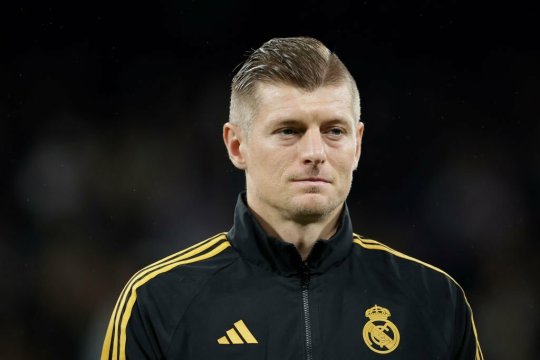
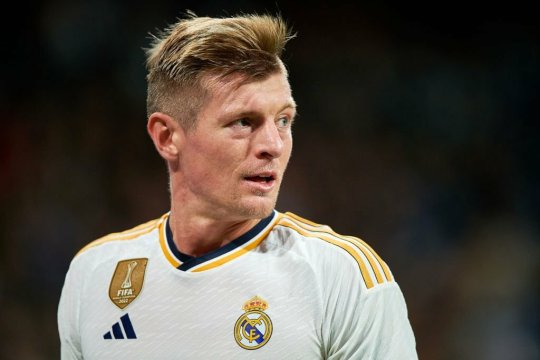
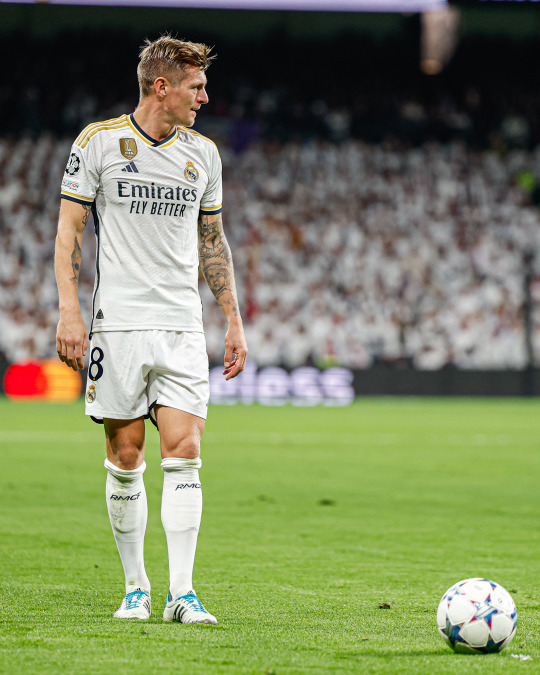

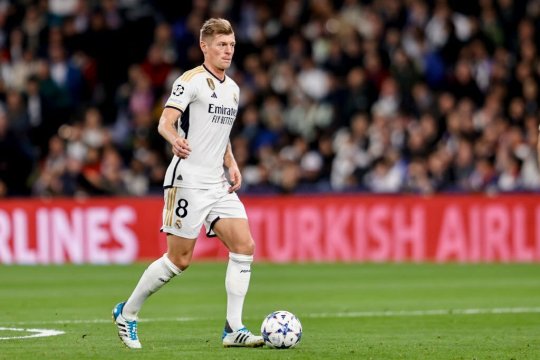
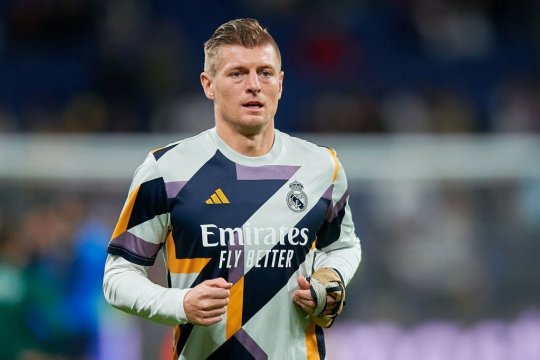

Toni Kroos against SC Braga @ Estadio Santiago Bernabéu for the Matchday 4 of the UEFA Champions League, Real Madrid won 3-0 and qualified for the Round of 16.
#football#soccer#toni kroos#real madrid#hala madrid#real madrid cf#real madrid club de futbol#toni kroos 8#tk8#santiago bernabeu#halamadrid#uefa champions league#ucl 23/24#ucl#futbol
15 notes
·
View notes
Photo
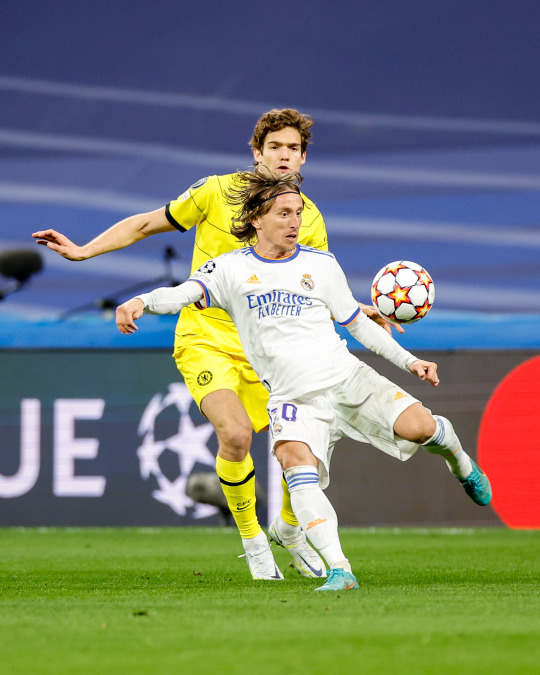
Luka Modric
#Fútbol#Luka Modric#Real Madrid#La Liga#España#Futbolista#Modric#Real Madrid CF#Spain#Real Madrid Club de Fútbol#Liga de Campeones#UEFA#Champions League#UEFA Champions League#Retro Futbol#2022#20s
25 notes
·
View notes
Text
@ real madrid


#i'm praying for them#dear god please let real madrid club de futbol remember how to play football#otherwise we are going to lose this game BADLY lol#real madrid
2 notes
·
View notes
Text
European Champion Clubs' Cup 1980/81 - Liverpool 1-0 Real Madrid
Parc des Princes - Paris, France
27 May 1981
Final
Alan Kennedy 81'


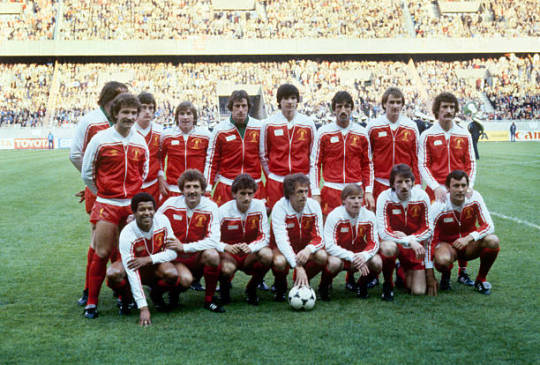



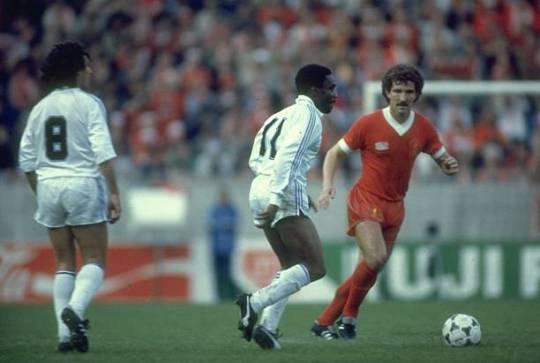
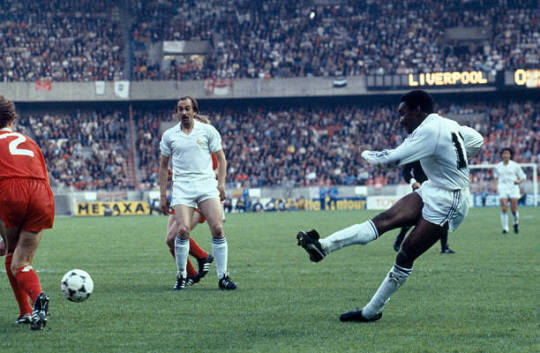


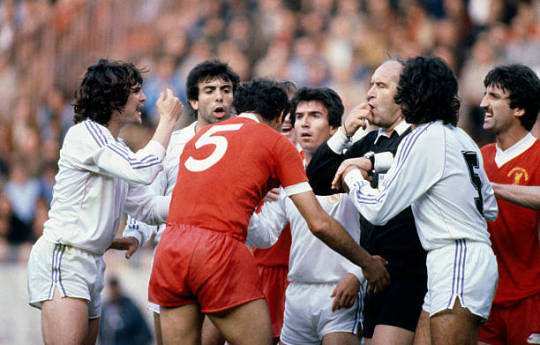


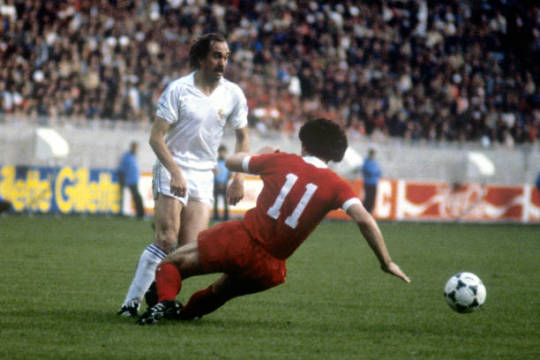







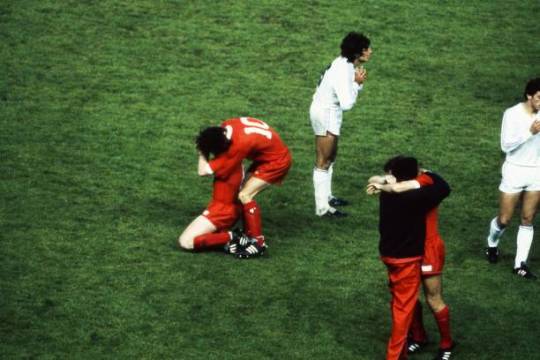

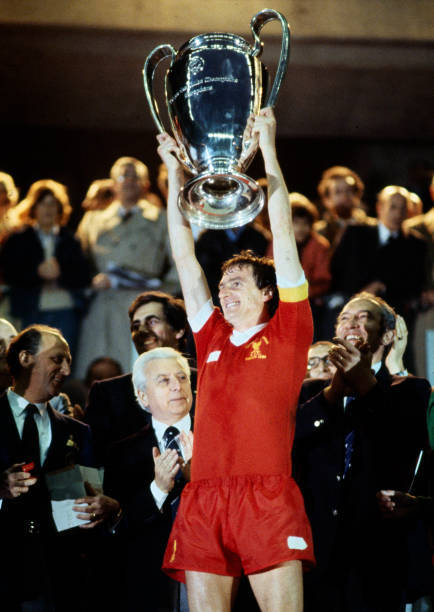



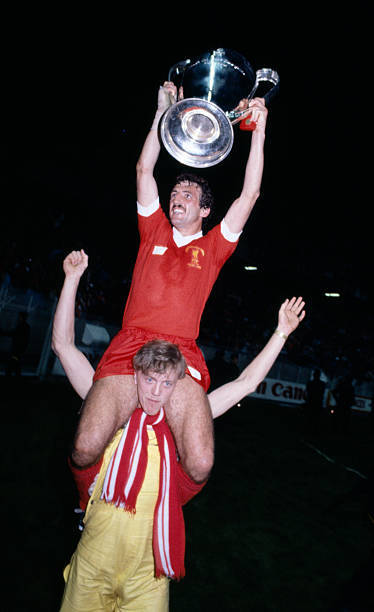

#European Champion Clubs' Cup#Coupe des Clubs Champions Européens#Season 1980/81#Liverpool#Real Madrid#Alan Kennedy#football#fussball#fußball#foot#fodbold#futbol#futebol#soccer#calcio
2 notes
·
View notes
Note
I assume you heard of what the Real Madrid twitter account posted, how Franco was a supported of Barça? Amazing historical revisionism, as if Catalans weren't tortured or murdered for daring to speak their language, or how even one of the directors of Barça was murdered after being accused of defending the independence of Catalonia.
I'm sure they are aware they're lying, I don't believe someone would be so ignorant to make up something like that and somehow convince themselves of it.
Basically, if someone's not aware of what happened, Real Madrid published a video saying that FC Barcelona (Barça) was favoured by the Spanish fascist dictator Franco, which is false. The team that has always been associated with Francoist beliefs is Real Madrid, so I assume they want to distance themselves from that by accusing their main rival (Barça), who also happens to be a symbol of a minority (Catalans) that was one of the main groups targeted by Spanish fascism.
Some actual historical information about Franco and Barça:
1. In 1939, all football clubs that were federated in the Catalan Federation were banned from playing. All the players' contracts were cancelled. That includes Barça. Some months later, they were reformed and could continue existing with a completely different directors/administration board accepted by the regime. (Women are banned from this position, when Barça had la Sagi.) Copying the model of Mussolini's Italy, the Francoist dictatorship gave control of sports to the Falange (the fascist party, the only party allowed) who controlled everything from the Delegación Nacional de Deportes (National Sports Delegation).
2. For the previous resolution, all of Barça's administratives are ceases and their names and files are given to the military police to control them. The board and administration of all the club was purged.
3. The regime sentenced to death and killed the president of Barça at the time (Josep Sunyol i Garriga) for being pro-Catalan.
The president of Real Madrid (Antonio Ortega) was also killed for being a communist. The difference is that nowadays, since the end of the dictatorship, Barça honours Josep Sunyol, while Madrid acts as if Antonio Ortega had never existed and doesn't have any space dedicated to him. Not only that, but if you look at Real Madrid's website, they leave an empty spot during the years that Antonio Ortega was president (1936-1939), pretending he never was and there simply was no president during those years.
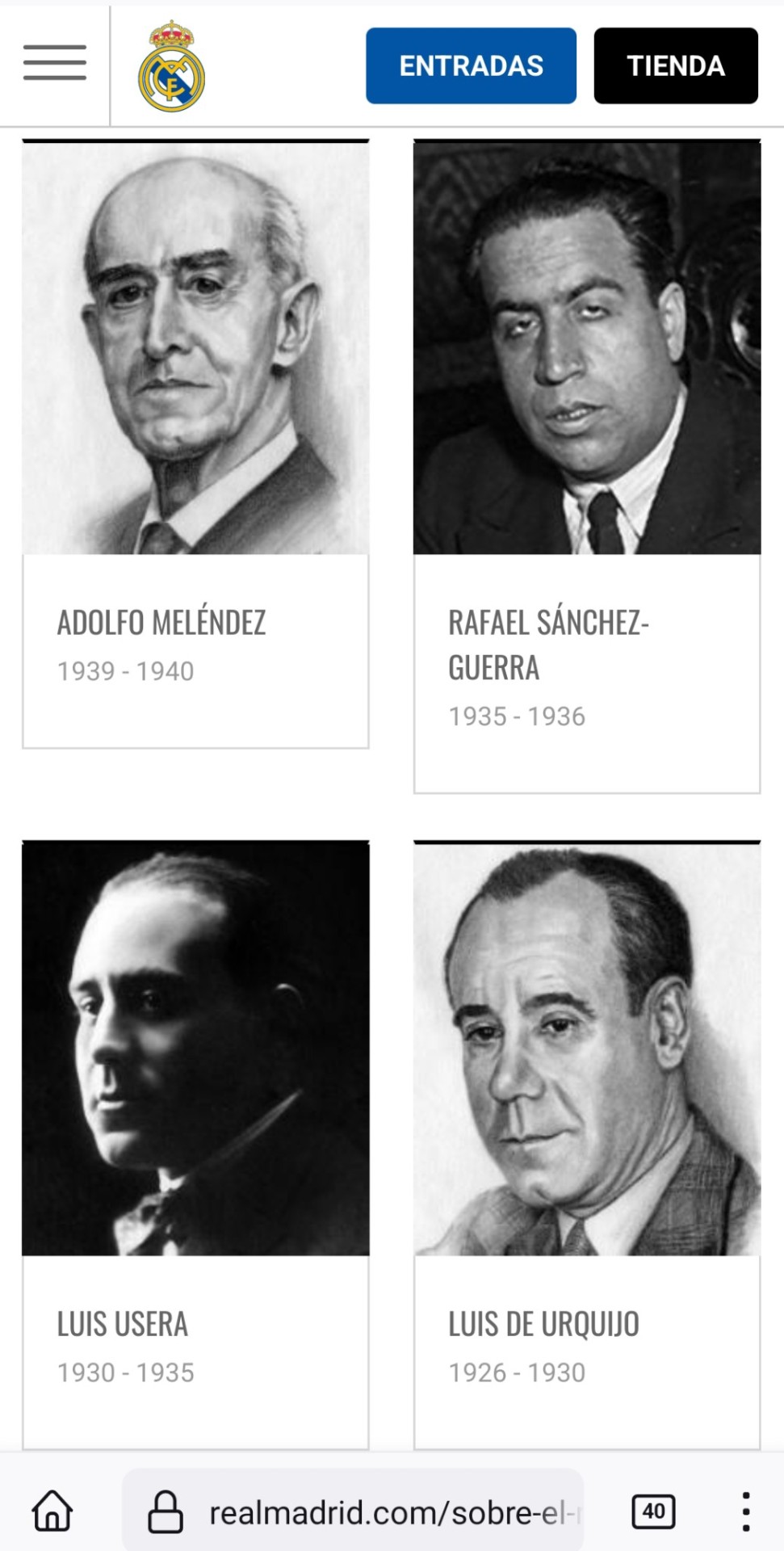
All the opposite, Real Madrid honours Santiago Bernabéu (the team's stadium is named after him), who worked to bring Real Madrid closer to the dictatorship. Even before Franco gained power, in the 1920s, he said that Real Madrid defends "the Spanish pride and cause". He later enlisted in the Spanish army and joined the fascists in their coup d'etat that led to the Spanish Civil War.
4. Barça had to change their entrance tickets and their name to Spanish following Franco's illegalization of the Catalan language. It stoped being called "Futbol Club Barcelona" (Catalan) and had to be called "Club de Fútbol Barcelona" (Spanish). Consequently, the letters in the club's shield were consequently changed from F.C.B. to C.F.B. The club wouldn't get their original Catalan name back until 1973.
5. Removed the Catalan flag from Barça's shield. They had to have 2 red bars instead of the 4 bars of the Catalan flag. Later they could get it back because Barça's shield is based on the shield of the city of Barcelona, so they alleged it's just a symbol of the city.
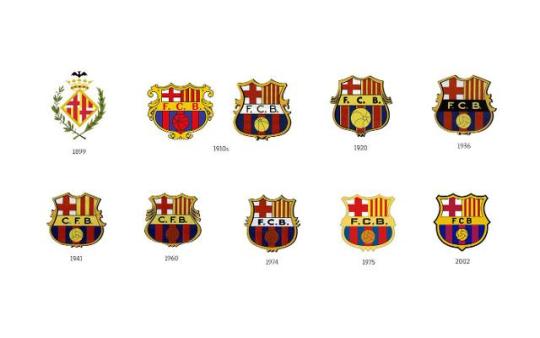
6. Instrumentalized Barça and Athletic de Bilbao against Catalan and Basque people, since the regime identified Barça and Athletic de Bilbao as the teams that symbolise these two minority nations and their independentism. Their first match after the war was scheduled by the regime, a Barça vs Athletic de Bilbao where the whole stadium was wrapped in huge Spanish flags and were various fascist gave speeches in favour of Franco and Spanish unity, including the general Álvarez-Arenas who talked about the purges by saying he praised Barça for "having thrown away forever the anti-Spanish seed, exposing their idea of what sport entities must be patriotically, the true healthy sport to educate the masses" ("que ha sabido arrojar para siempre la semilla de los antiespañoles, exponiendo su idea de lo que patrióticamente han de ser las entidades deportivas, el verdadero n del deporte sano y educativo de multitudes").
7. The regime abolished the Catalonia League, where Barça played.
8. More purges in Barça followed after that first one. The dictatorship carried out in-depth investigations into Barça's directives and members to find people who fought for Catalan rights. Some people were accused for being in the Barça directive. Here's some extracts from the letter where the leader of the fascist police in Barcelona, Luis Martí Olivares, sent to order the arrest of some Barça directives and to order them to be taken to Madrid for trial:
In front of the statue of Casanovas, they used to celebrate acts of separatist affirmation [...]. All the directives, players and members [of Futbol Club Barcelona] have always attended it with flower crowns, offerings with the shield of the "F.C. BARCELONA"
Another one by him:
It's publicly known that the "F.C. BARCELONA" has always been political, at the beginning pro-Catalan and since a long time ago frankly separatist and for this reason they have exploited their rivalry with R.C.D. ESPAÑOL, which has been precisely the only Football Club in Catalonia that has signified themselves as a true pro-Spanish. In the matches between these two Clubs, the Barcelona fans considered the Spanishists to be foreigners, because they spoke in Spanish.
After the purges, the new dictatorship-approved directive board of Barça was made (for the 1st time in the club's history) of people who were not even members of the club. Many of them were fervent Espanyol fans, not Barça fans.
Most of their first decisions were political, including the fact that they removed the club's founder Joan Gamper as honorary president and declared the new honorary president to be the Spanish fascist general Múgica.
They also made the players taka a flower crown to the founder of Spanish fascism José Antonio Primo de Rivera, which had the Spanish flag and the Barça flag and inscription "F.C. Barcelona to José Antonio".
One of Barça's directors during the dictatorship was actually a paying Espanyol member during his time as Barça president, another director was an army general that was appointed directed by the higher spheres of the dictatorship and who openly said he was directing Barça simply because "as soldier with discipline I'm following orders".
9. Finally, in June 1946, the members of the Barça board who were actually Barça fans and cared for the club mass resigned and pressured the director to stop being a club under direct control of the dictatorship's government. Their protest resulted in the end of the regime's direct intervention, and after 10 years Barça could go back to having a new directive board, this time mostly made up of people who had always been Barça fans, though the regime still only allowed people who were officially approved.
So while Barça was directed by people who didn't care about the club and who were very badly coordinated and later was starting to re-order itself (still only with approved people), Real Madrid had its golden age, under the director Santiago Bernabéu (who was defined as "he's what Philip II was to Spain: its best king" and as we've explained before was a fascist) and a director board that had close ties to the fascist government.
The club that was most favoured by the regime during its first years was Atlético de Madrid (at the time called Atlético Aviación) which was related to the Army. But the president of Real Madrid Santiago Bernabéu got the club closer to the dictatorship and made it become the regime's favourite from the late 1950s on. Real Madrid played a very important role in fascist Spain's public relations, because that's the historical period that ended the autarchy and when fascist Spain was accepted in the UN and kept the dictatorship with the agreement of the other countries. Real Madrid acted as a political and cultural ambassador of fascist Spain in other countries. In return it received favours from the dictatorship. For example, the regime changed the sports clubs' status so that Madrid could hire Alfredo Di Stefano instead of Barça in 1953. Barça had already closed the case and the club and the player were ready to sign, but the dictatorship's direct intervention stopped it.
10. Since speaking Catalan was banned, some Catalan traditions were banned, even some Catalan songs were banned, and everyone was forced to be Spanish and a Spanish nationalist, with the National-Catholic morale imposed in every aspect of life, Barça became the place to express Catalanity. People used to go cheer for Barça as the "allowed"/hidden way of cheering against Francoism and in favour of Catalonia. This sentiment was well represented by the song "Botifarra de pagès" by the Catalan humour band La Trinca, which they released in 1974:
youtube
If you don't speak Catalan, the whole song is about how Catalans cheer for Barça as a representation of cheering for Catalan rights and link how well Barça is doing at the time with Catalanism ("l'any que ve no farem riure, visca Catalunya ------" = "next year we [Barça] won't be laughable, long live free Catalonia!" with a peeeeeep over where the word "free" woul have been) with cultural references. For example, they sing the tempo of sardanes with the name Cruyff, and change the famous quote "som i serem gent catalana, tant si es vol com si no es vol" (we are and we will be Catalan people, wether they want it or not) from the song La santa espina (song forbidden during Franco's dictatorship) with "som i serem socis del Barça, tan si es vol com si no es vol" (we are and we will be Barça fans, wether they want it or not).
11. Regardless of the club's significance to the population (because, let's be honest, everyone knew what Barça meant), it was still a club that existed under a fascist dictatorship. During the dictatorship, only approved or appointed people held office and had the power to take decisions. And if you were in that position were you had been approved, even if you had your secret political beliefs and actions, there was only so much you could do in public before getting fired, arrested, banned for life from your job, get you and your family on a watchlist and likely get tortured.
One of the "unwritten rules" during the dictatorship was that anyone who created a prize or medal had to give the 1st to Franco. Barça did that too, but they have later addressed it and taken it back.
12. In the semifinals of 1942-1943 season, Barça won against Real Madrid by 3-0. On the return match, the dictatorship's police went down to the dressing rooms to intimidate the Barça players so they would let Madrid win. The result was 11-1 (Madrid victory), which effectively gave victory of the league to Real Madrid.
13. Dictator Franco, personally, was a follower of Real Madrid. It's known that he used to comment the lineups with his officers.
---------
Since Real Madrid published that video some days ago, so many Spanish newspapers, magazines and TV channels have talked at length about how Barça actually helped Franco. They use as excuse the fact that the Barça under the dictatorship's control (because remember that the dictatorship chose who would lead the team, even when these people weren't Barça fans it only mattered that they were fascists) gave condecorations to the regime officials. This is worth remembering and worth criticizing, but this says more about the dictatorship than it says about Barça, especially if they want it to represent nowadays Barça. Because the thing is that this is no secret, and Barça has already addressed it in the past: in 2019, Barça officially withdrew all the medals given to Franco officials. Real Madrid still honours fascists and erases their antifascist director, and knows that they're a symbol of Spanish nationalism.
However, it seems like the people who so quickly want to run to talk shit about anything that has to do with Catalonia don't usually keep the same energy to criticize the dictatorship itself and how it intervened every aspect of life, crushing dissidence and national minorities in everything, even their hobbies, nor to make the same criticisms of Real Madrid, because it's not just about Barça but a way to attack Catalan society.
#ask#anonymous#futbol#història#barça#esports#futbol club barcelona#fc barcelona#barca#football#european football#la liga#history#sports history#francoism#1940s#20th century history#spain#barcelona
187 notes
·
View notes
Text
On August 6th, 1936, Josep Sunyol made a mistake that cost him his life. The Republican president of FC Barcelona, a proud Catalan, was executed by Nationalist forces in the midst of the Spanish Civil War, after saluting troops he mistakenly identified as part of the Republican resistance by yelling, “Viva la República,” (Camino, 2014). The assassination of Sunyol symbolized the beginning of an oppressive era where regional cultures were restrained in Spain, particularly the autonomous community of Catalonia. The most publicly admired and respected representation of Catalanism, Futbol Club Barcelona, colloquially known as Barça, faced countless hardships during the fascist dictatorship of Francisco Franco from 1939 to 1975. The club rapidly became one of the only ways the Catalan people could freely express themselves and fight against Franco, especially by playing the team that became the face of the regime, Real Madrid. In the present day, Barça continues to symbolize hope and freedom for Catalonians. Amid the rise of Francoist Spain in the mid-1900s, escalating tensions between Catalan club FC Barcelona and centralist Real Madrid transformed their rivalry into a political product representing the struggles of the Catalan people, illustrating how football transcends the limits of sport to reach social and political issues, particularly through the ambience of stadiums.
Throughout Spain, football stadiums became an essential place of solace for oppressed fans, where they were free to speak out on the issues that plagued their lives. People could openly express their identities in the stands, as matches between teams of different regions often represented a conflict larger than the game itself. One example of Catalonians using football for this purpose dates back to the pre-Franco era, when “the Spanish national anthem was played to a chorus of boos before a match at Les Corts, FC Barcelona’s stadium in 1925” (O’Brien, 2013). Even prior to Catalonians being officially repressed under Franco, it was clear that they valued their regional identity more strongly than their national one.
As the dictatorship grew stronger, regional teams like FC Barcelona faced the brunt of the nationalist policies. In promoting a unified Spain, the regime heavily cracked down on aspects of localized culture. The Catalan language, in all forms, was banned in public, and only Castilian Spanish was permitted (Shobe, 2008). An order passed in 1941 required that the Catalan name of “Futbol Club Barcelona” be renamed to the Spanish “Club de Fútbol de Barcelona” (Kassimeris, 2012). The Catalan senyera flag was also banned, and so the senyera in FC Barcelona’s coat of arms was replaced with the newly created flag representing the fascist state (Shobe 2008). Under the severe Castilization of their environment, the people of Catalonia were being stripped of their identities right in front of their eyes. With essentially no power, the Catalan people “threw their cultural pride into Barça. At a Barça match, people could shout in Catalan and sing traditional songs when they could do it nowhere else” (Shobe, 2008). Inside the stadium was where it was openly acceptable to oppose the restrictions of the regime and where liberation felt most realistic.
On the other side of the country, Real Madrid was thriving as the favorite club of the regime. Franco believed the Spanish national team was not gaining enough traction internationally, as they did not qualify for the World Cup multiple times in a row and performed poorly the years they did. Fortunately for him, “the image of the Spanish national team was blurred by the prevalence and success of Real Madrid in European Football from 1956,” effectively thrusting the club into the international spotlight (Goig, 2007). Real Madrid won five consecutive European Cups from 1956 to 1960, and their recognition both in and out of Spain surged with each victory (Quiroga, 2015). The relationship between the team and the regime was undoubtedly symbiotic. Real Madrid portrayed a positive image of the dictatorship to international audiences, while Franco gave them his full-fledged support and funds. In the 1960s, as television ownership grew across the country, Real Madrid was the most broadcasted team (O’Brien, 2013). The increased public exposure to the club acted as justification for the actions of the fascist regime, because people started paying more attention to football than to the government. Supporters of Real Madrid, known as madridistas, had no idea what was happening politically behind closed doors, nor did they seem to care.
The matches between FC Barcelona and Real Madrid, termed el clásico, were expectedly controversial. Spanish media outlets moved quickly to polarize the two sides, with newly-created “Marca” pushing for Real Madrid and the dictatorship, while “El Mundo Deportivo” supported FC Barcelona and ultimately the oppressed people of Catalonia (O’Brien, 2013). The politicization of the sporting rivals is seen best in a famed clásico played in June 1943, the second leg of a knockout round in the Spanish Cup. FC Barcelona had won the first game 3-0 and were on track to advance to the next round, until police officials entered the Catalan locker room before the game. Flash forward a few hours, and Real Madrid won the game with a score of 11 to 1 (Shobe, 2008). The interference by the Francoist police no doubt played a significant role in Barça losing so severely. While it is not known what exactly was told to the Barcelona players in the locker room, it can be inferred that they were threatened to purposefully lose the game, otherwise, they could lose their lives.
As the dictator fell ill, FC Barcelona worked to reverse the impacts of his policies and reclaim their Catalan identity. During the 1973-1974 season, they shed the Spanish name of “Club de Fútbol de Barcelona” and went back to the Catalan version it currently holds (Shobe, 2008). Additionally, in 1975, the club switched the official language back to Catalan, thus once again proudly representing the people of Catalonia (Quiroga, 2015). After Franco’s death, the effects of the regime collapsing were felt immediately in stadiums across the country. One clásico played just a month after Franco’s death in 1975 experienced the largest public emergence of senyera flags since the Civil War, and in Basque Country, a similarly tyrannized region of Spain, a game between two local teams “witnessed the spectacle of both captains carrying the Basque flag on to the pitch before the game” in early 1976 (O’Brien, 2013). Events that would have been inconceivable just months earlier were now reality, as stadiums reflected the transition back to a more accepting nation.
These bold representations of cultural unity at football games did not cease in the years after Franco. In fact, they have grown stronger in the 21st century. In the 2009 Spanish Cup final between Basque side Athletic Club de Bilbao and FC Barcelona, the crowd vehemently booed King Juan Carlos I and the Spanish national anthem before kickoff (Ortega, 2015). Decades later, supporters have not forgotten the unjust treatment they were put through and are still vocal about it during matches. A fan of Celta de Vigo, situated in once-repressed Galicia, proclaimed that “On going to a match we never forget Galician prisoners, repression, the secular subjection of Galicia... Spain limits the ways in which we can fight, so football is a way of voicing our demands” (Spaaij & Viñas, 2013). While fans of teams in marginalized regions use every opportunity they can to bring light to the maltreatment and discrimination of their pasts, for the most part, Real Madrid supporters do not follow the same path. In 2010, when Real Madrid beat FC Barcelona 1-0 in the Spanish Cup final, a large group of madridistas gathered in downtown Madrid, carrying Spanish flags while cheering “I’m a Spaniard, Spaniard, Spaniard” (Ortega, 2015). It is incredibly telling that in choosing to reaffirm their national identity rather than regional, madridistas see themselves as representing the entire country. As Franco’s Spanish Nationalist movement saw its triumph over Republican forces as a victory for Spain, madridistas still see a Real Madrid victory over a formerly oppressed team as a win for the whole nation.
In 2017, Catalonia became the forefront of global news as violence broke out amidst an independence referendum. On October 1st, the autonomous community conducted a vote regarding whether Catalonia should declare independence from the Kingdom of Spain, and the regional government announced that out of 2.25 million votes, about 90% were in favor of separating (Dewan, Clarke, & Cotovio, 2017). Unfortunately, the vote was heavily obstructed by the Madrid government. National forces were sent in from the capital, “fir[ing] rubber bullets at protesters and voters trying to take part in the referendum, and us[ing] batons to beat them back,” injuring around 900 people (Dewan et al., 2017). Predictably, FC Barcelona is often utilized to discuss and promote Catalonian independence, such as in 2010 when a banner declaring that “Catalonia is not Spain” was displayed during a game against English club Arsenal (O’Brien, 2013). When the central government began plans to thwart voting earlier in September of 2017, Barça decided to speak out. The club released a statement on Twitter, expressing that “FC Barcelona...remain[s] faithful to its historic commitment to the defense of the nation, to democracy, to freedom of speech, and to self-determination...FC Barcelona...will continue to support the will of the majority of Catalan people” (FC Barcelona, 2017). In openly showing support towards Catalan citizens’ voting rights and the independence referendum, Barça effectively bridges the gap between sports and politics. This is a two-way street: FC Barcelona stands up for their adherents, just as fans turn to the club to escape injustice time and time again. Coincidentally, Barça had a game scheduled the same day as the vote, which was played behind closed doors in order to eliminate the possibility of violence erupting in the crowd. The opposing team, Las Palmas, wore “special uniforms emblazoned with the Spanish flag,” something very out of the ordinary (Minder & Barry, 2017). Such a display could not tell a more pointed message.
The Franco dictatorship shaped the future of Spanish football forever, with Real Madrid and FC Barcelona at the forefront of the action. Real Madrid’s consistent success found them gaining the trust of the regime, which showcased the club’s victories as a positive interpretation of the fascist dictatorship itself. The desire of a unified, homogeneous Spanish state fueled regional tension, especially in Catalonia. Despite having their language and flag taken away, the Catalan people sought comfort in the stadium of FC Barcelona, where they could freely sing and speak and cheer for their team. In the decades after Franco, FC Barcelona has captivated audiences across Spain and the globe, cementing the club’s status as the most powerful cultural institution of Catalonia. “When the team took the field against FC Valencia in February 2012, nine players from the starting 11 emerged from the club’s Cantera System” (O’Brien, 2013), illustrating the importance Barça places on homegrown players. By providing unmatched talent bred exclusively in the club’s own youth academy, FC Barcelona is ensuring that they are conveying the best image of Catalanism to the rest of the world. As the Catalan struggle for independence continues, Barça was, is, and will continue to be a significant characteristic of the identities of millions of Catalonians. FC Barcelona represented hope in a time where its people needed it the most, and it is still the most influential institution in Catalonia to this day. The club and region are inextricably intertwined, as best seen in the passionate cheer: “Visca el Barça i visca Catalunya” - long live FC Barcelona and long live Catalonia.
References
Camino, M. (2014). ‘Red Fury’: Historical memory and Spanish football. Memory Studies,7(4), 500-512. doi:10.1177/1750698014531594
Dewan, A., Clarke, H., & Cotovio, V. (2017, October 02). Catalonia referendum: What just happened? CNN. Retrieved from https://www.cnn.com/2017/10/02/europe/catalonia- independence-referendum-explainer/index.html
Goig, R. L. (2007). Identity, nation‐state and football in Spain. the evolution of nationalist feelings in Spanish Football. Soccer & Society,9(1), 56-63. doi:10.1080/14660970701616738
FC Barcelona, @FCBarcelona. (20 September, 2017). Communique - Attached Image. [Twitter post]. Retrived from https://twitter.com/FCBarcelona/status/910462298908708864
Kassimeris, C. (2012). Franco, the popular game and ethnocentric conduct in modern Spanish football. Soccer & Society,13(4), 555-569. doi:10.1080/14660970.2012.677228
Minder, R., & Barry, E. (2017, October 01). Catalonia's Independence Vote Descends Into Chaos and Clashes. The New York Times. Retrieved from https://www.nytimes.com/2017/10/01/ world/europe/catalonia-independence-referendum.html
O’Brien, J. (2013). ‘El Clasico’ and the demise of tradition in Spanish club football: Perspectives on shifting patterns of cultural identity. Ethnicity and Race in Association Football, 25-40. doi:10.4324/9781315094304-3
Ortega, V. R. (2015). Soccer, nationalism and the media in contemporary Spanish society: La Roja, Real Madrid & FC Barcelona. Soccer & Society,17(4), 628-643. doi:10.1080/14660970.2015.1067793
Quiroga, A. (2015). Spanish Fury: Football and National Identities under Franco. European History Quarterly,45(3), 506-529. doi:10.1177/0265691415587686
Shobe, H. (2008). Place, identity and football: Catalonia, Catalanisme and Football Club Barcelona, 1899–1975. National Identities, 10(3), 329-343. doi:10.1080/14608940802249965
Spaaij, R., & Viñas, C. (2013). Political ideology and activism in football fan culture in Spain: A view from the far left. Soccer & Society, 14(2), 183-200. doi:10.1080/14660970.2013.776467
#just in case anyone forgot :)#fc barcelona#fcb#football#this is just one of my two or three essays on this topic lmfao#i think this is my most recent one from 2018 for my social and historical perspectives of sport class in 2nd year of undergrad#i miss when i used to fight people on here by just copy pasting paragraphs of this and the other papers. lol#that whole point about stadiums isn't really relevant to this particular incident/conversation (i think) and tbh idk why i included it#maybe one of the papers had some really good info about it that i couldn't ignore
74 notes
·
View notes
Text
god please strike down the disgusting footballing institution that is real madrid club de futbol 🙏🏻
5 notes
·
View notes
Text
el futbol es un deporte maravilloso y hoy ablaremos sobre
EL REAL MADRID

el club fue fundado en 1902 elclub maximo ganador de la champions league con 14 probablemente 15 con esta temporada maximo idolo Alfredo Di Stéfano,Cristiano Ronaldo dos Santos Aveiro
HALA MADRID HALA MADRID HALA MADRID v HALA MADRID HALA MADRID HALA MADRID HALA MADRID HALA MADRID
La 15 es nuestra
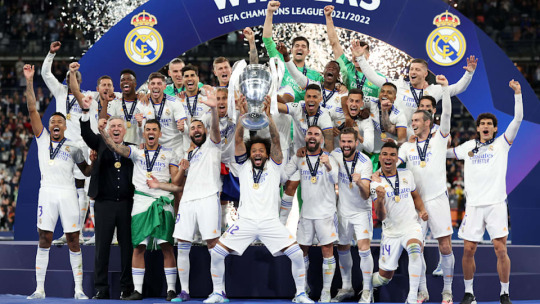
2 notes
·
View notes
Text
the way I was so stressed watching the match during the earlier minutes, w Nunez scoring and Thibaut error. now It's 2-4. Real Madrid, you will forever be written down in history as one of the best.
#GOD i love them so much#real madrid club de futbol#real madrid#liverpool#champions league#football#thibaut courtois#darwin nunez#ucl 22/23#ucl#liverpool v real madrid
8 notes
·
View notes
Note
hiii can you explain the drama behind the video real madrid shared ?
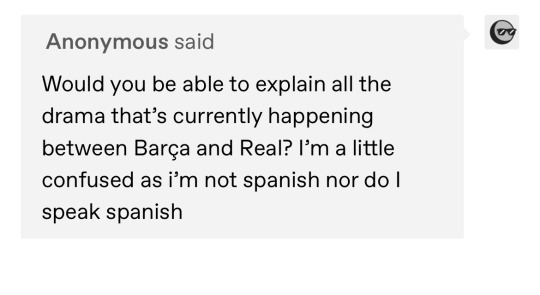
I had to wait until today to have the time and a clearer head to answer this, sorry .
Fc Barcelona elected president Joan Laporta had a press conference on Monday were he explained, within what's legally sound for him to do, everything that's going on with the Negreira Case. Talking about the role of Negreira's company and what they did for him and an overview of how those 7 million over the 18 years. It all seems pretty bland, and I'm confident the trial will go nowhere. When he was finishing up his statement he criticized Real Madrid for trying to join the case against Fc Barcelona as a party that had been affected by the alleged actions FcB had taken to get refs in their favor (which we all know didn't happen, we lost at least one league because of bad ref calls that helped Real Madrid win La Liga) . Laporta said that it was a move that was hastily decision from their part and also highly cynical because Real Madrid had been highly favored during the years, explaining they were the regime's team (Franco and the Royals' team) that for 70 years all the high ranking officials in the league, the referee committees and the majority of referees were members, ex player, ex director or related to Real Madrid and for them to act like the golden era of Fc Barcelona affected them was a act of high cynicism. Btw the current president of both la liga and Spanish Football Federation are both huge Real Madrid fans and they admit lol .
Real Madrid waited until like 12AM the next day to publish a video basically accusing Fc Barcelona of being the regime's (Franco's dictatorship government) team with footage of the Camp Nou's inaguration with Franco and his official's there, saying that FcB gave him honors and such, like anything else would have been acceptable under a dictatorship. What's most offensive about the whole allegation is that all cultural minorities in Spain like the Basque, Catalans, Gallegos and such were prohibited from expressing their cultural identity or language. For the Basque it was so oppressive (Basque predates the Castilian community and language btw) and offensive that there were guerilla and terrorist groups (ETA) formed to fight the Spanish government up until the 1990s, even when Franco and the dictatorship was done. For the Catalans and Catalonia, it was pretty oppressive as well. During the Civil War that led to Franco's dictatorship, Barcelona was one of the last strongholds for fighting against the fascists, especially because the City of Barcelona had been turned into a anarco-socialist society, were women were treated as equal, totally democratic work places and organizations, etc. So, Franco carpet bombed the city. Not only that, the offices of Fc Barcelona were bombed but the president of Fc Barcelona at the time of the war was ordered to be killed. All things Catalan were made illegal, you couldn't register any new children with a Catalan name, you couldn't teach Catalan at school, you were arrested for speaking Catalan in public. Futbol Club Barcelona became Club de Futbol Barcelona to make it Spanish and not Catalan etc. So the allegation that Franco's regime favored Fc Barcelona, one of the pillars of the Catalan identity in Catalonia, is super offensive and just a lie, it is a an offense to the historical memory of a country and to the many people who were killed and put in mass graves or arrested for just being catalan or fighting for their right to express their cultural identity. The first Jordi in years who was registered in the 70s was Jordi Cruyff, bc Johan Cruyff (SUPER IMPORTANT Fc Barcelona player, later coach who taught Pep everything, we love Cruyff) named him that in the Netherlands and traveled back with him, they freaked out when they saw his name. Jordi Cruyff one of current sporting directors under Laporta. SO IMAGINE! How terribly offensive and stupid that Real Madrid was. It's like something out of Fox News or The Daily Mail, style fake news and totally offensive. BTW some Real Madrid fan still use the fascist flag of Spain, it was seen last year in the stands. Those people have some fucking gall. Shit club, shit history. That's why you always will see "libertad" and "Independencia" signs and Catalan identity and independence signs and chants at Fcb. Visca Barca y Visca Catalunya.
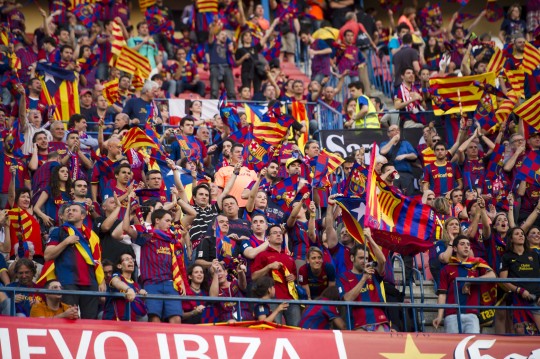
10 notes
·
View notes
Text

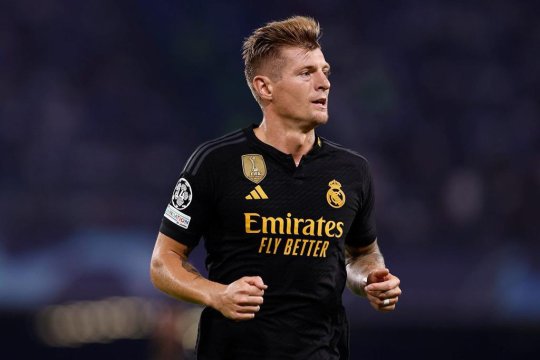
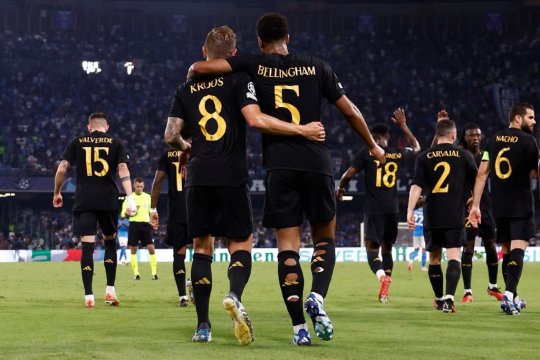
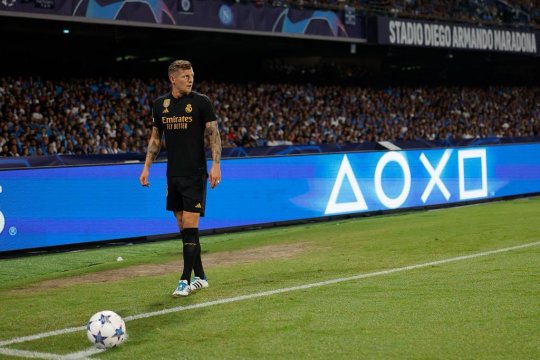
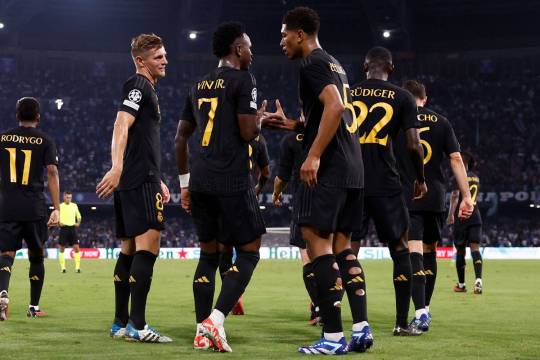




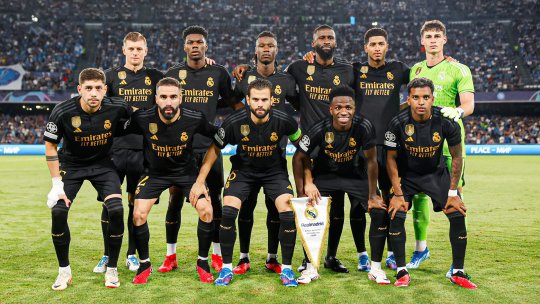
Toni Kroos vs SSC Napoli @ Stadio Diego Armando Maradona, Naples for the Group Stage of The UEFA Champions League.
He played his 100 match with the Real Madrid's shirt in the Champions League.
#hala madrid#toni kroos#tk8#kroos#football#uefa champions league#champions league#real madrid#real madrid club de futbol
9 notes
·
View notes
Photo

Karim Benzema
#Fútbol#Karim Benzema#Real Madrid#La Liga#España#Real Madrid CF#Delantero#Benzema#Real Madrid Club de Fútbol#Liga de Campeones#Champions League#Football#Spain#Retro Futbol#20s
2 notes
·
View notes
Text
INTRODUCCION
voy a hablar un poco de la historia de el Real Madrid , este club es el mas grande de el mundo con 14 copas de Europa ( siendo el máximo ganador de ese torneo) y 35 ligas , pero ¿ Como inicio su historia ?
En el año de 1902 fue fundado por el catalan quien originalmente fundo el club , pero le dio mas importancia Juan Prados , Julián Palacios ( Primer presidente de el Real Madrid ) , La popularidad de el club creció por España que organizaron un torneo en honor a el rey Alfonso xvll , la iniciativa fue fundada como la copa de el rey y así el Madrid tuvo mas peso en el futbol Español y todo lo demás ya es historia

9 notes
·
View notes
Text
REAL MADRID
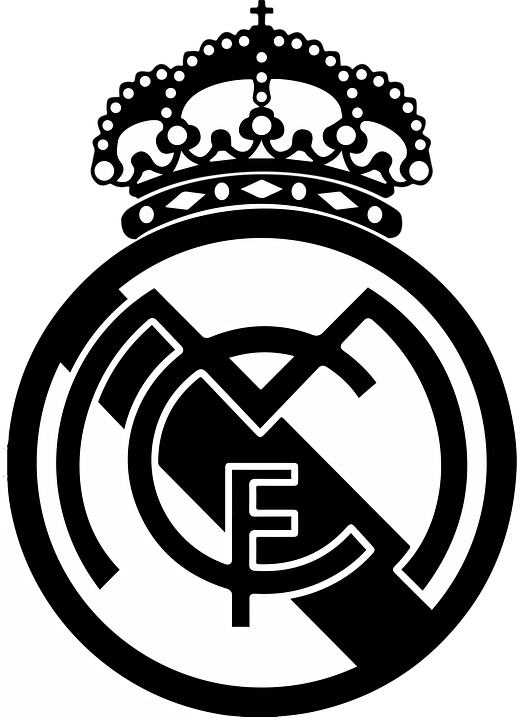
El Real Madrid Club de Futbol és un club deportivo de la ciudad de Madrid, España. Se fundo el 6 de marzo del 1902.
3 notes
·
View notes